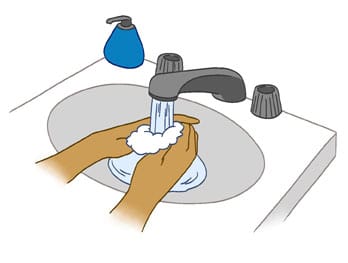
Are you looking for information regarding how to catheterize through a stoma after mitrofanoff surgery? You’ve come to the right place. Here at 180 Medical, we aim to help provide the support and resources you need and the best service possible.
We understand that fear, anxiety, and worry can overcome you when first learning the news you’ll need surgery. But rest assured, you’re not alone. The good news is that educating yourself about what to expect can ease some of your fears and better prepare you for what’s to come.
In this blog post, you’ll learn how to use a catheter through a stoma. Plus, we provide some resources that can help you along your journey.
What Is Mitrofanoff Surgery?
A Mitrofanoff surgery is a procedure in which a surgeon cuts a piece of tubular tissue and creates a conduit from a stoma to the bladder. An individual with a Mitrofanoff empties the bladder by passing an intermittent catheter through the stoma into the bladder.
For some, a Mitrofanoff has advantages over a suprapubic because there is no indwelling Foley tube or no collection bag. Also, the stoma is visible and accessible, making it easier than inserting a catheter into the urethra.
This enables a person with limited hand dexterity who can’t catheterize through the urethra to manage the bladder independently. Another advantage is because the stoma is so easy to see and reach, cathing can be accomplished from a chair or wheelchair.
This procedure is becoming more and more common for those with bladder problems due to spina bifida, bladder exstrophy, or bladder obstruction.
Which Type of Catheter Is Ideal When Cathing Through a Stoma?
So, which type of catheter is right for you? It depends on each individual’s anatomy, needs, and personal preferences. At 180 Medical, you have various catheter materials, sizes, and types from which to choose.
Every catheter type has two tip options: straight tip catheters or coudé tip catheters. While each case is different on which catheter tip will work best for your needs, straight tip catheters often work well for most individuals when catheterizing through a stoma.
Here at 180 Medical, we have several straight tip catheters to choose from. These are also available as pocket catheters, which come in a curved or U-shaped package and can be easily concealed.
How to Catheterize Through a Stoma
Cathing through a stoma after mitrofanoff surgery doesn’t have to be complicated. It’s so easy even children can learn! With the 180 Medical Kids Club Program, we show children how easy it is to catheterize through a stoma. If you have children that would benefit from receiving this information, we encourage you to visit our Kids Club page.
Below are steps to teach you how to use a straight intermittent catheter through a stoma.
1. Wash Your Hands
It’s important to always keep yourself free from bacteria and germs. Be sure to get all your supplies ready and wash your hands with soap and water.

2. Wash the Area Around Your Stoma
Gently wash the around your stoma with warm soapy water. Betadine swab sticks or benzalkonium (BZK) wipes work well for cleaning around your stoma.
3. Lubricate the Catheter
Each catheter has specific instructions on the package. Some catheters come with lubricating jelly, while others do not. If your catheter comes with lubricating jelly or is already pre-lubricated, follow the instructions on the package.
If your catheter does not come with lubrication, you need to use catheter lubricant to minimize friction during self-catheterization. We have catheter lubricant you can request from our website.
4. Insert the Catheter
Insert your catheter into the stoma slowly. When the urine comes out, insert the catheter a little more. Be sure to let the urine go into a toilet or container. When the urine stops flowing, slowly remove the catheter from the stoma.
5. Throw Away the Catheter and Wash Hands
Throw the catheter away and wash your hands again.
Want to Learn More About How to Catheterize Through a Stoma?
At 180 Medical, we do everything in our power to provide you with the products and resources you need, whether you need catheters after stroganoff surgery or have another condition.
180 Medical also offers a great resource for parents and children—the 180 Medical Kids Club. We include helpful pictorial instructions for how to catch a stoma, fun games, a colorful storybook with relatable characters, and more!
We also offer free catheter samples in sizes that will best suit your personal needs. Our specialists are extremely knowledgeable and can assist you every step of the way. If you have any questions or concerns about catheterizing through a stoma, contact us today. Our Specialists are here to help.
Disclaimer: This is intended to provide a general understanding of self-catheterization. It should not be used in place of a visit, call, or consultation with a physician or other healthcare provider.
